Owen’s Story – Parents Speak Out About Allergic Contact Dermatitis and Patch Testing
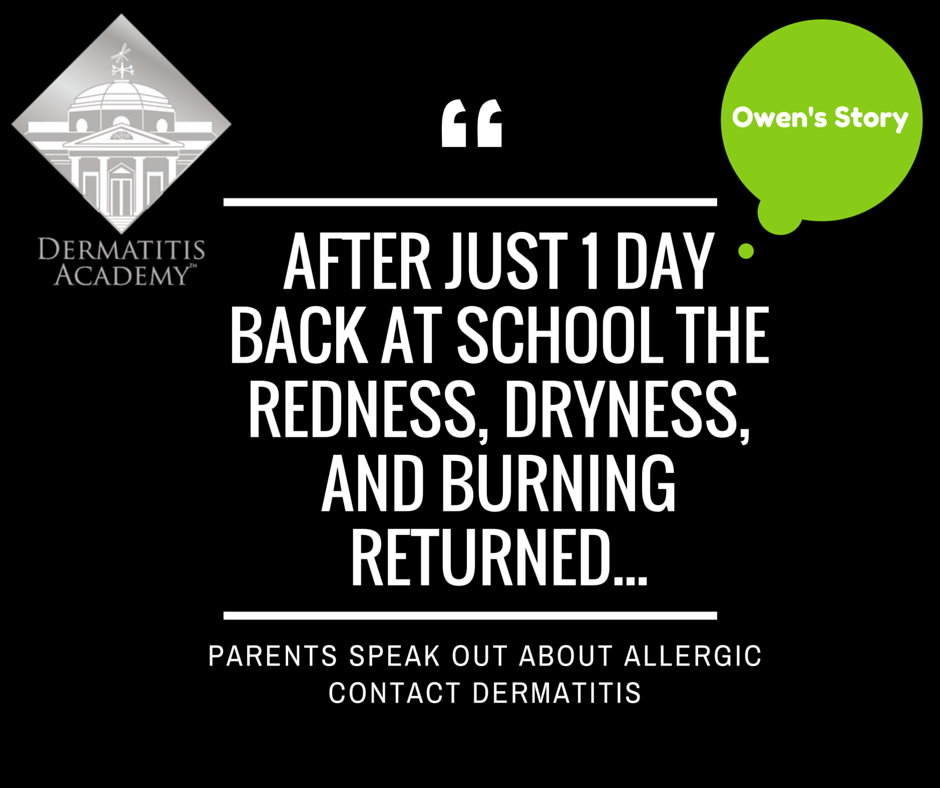
“My name is Lisa. As a sufferer of contact dermatitis (triggers still unknown) and the mother of a child with contact dermatitis (confirmed by patch testing), I’m a strong proponent of thorough, accurate patch testing available to all. First, as a preface, my 9 year old son (Owen), is allergic to corn by both ingestion and upon contact. He has been since birth, though the contact part began later at age 3.5 years. I feel it necessary to mention, in addition to and in reference to the discussion of contact dermatitis, because many food-allergic children also have contact dermatitis and eczema problems. Additionally, the corn allergy has and still makes deciphering his skin issues complicated.
Corn is in almost everything (food, health/ beauty aids, adhesives, preservatives, etc.) or used in the packaging of many things. As an example, the plastic coating on cheese is often dusted with corn starch to keep cheese from sticking to the plastic. Since Owen reacts differently to pure corn and its 110+ names (preservatives/derivatives), we blamed all skin/eczema issues on corn for the first 3-4 yrs of his life. Granted, corn allergy was still rare 10 years ago and is still not a common food allergy, though it is gaining momentum quickly.
Getting the corn allergy diagnosis was difficult enough without adding contact dermatitis to his on-going list of medical concerns . Our first Allergist kept saying he only had eczema because “textbook” hives don’t manifest with any of Owen’s food allergies unless he eats/ touches pure corn meal. His corn rashes were simply odd. We finally found 1 of only 3 Allergists in the St. Louis, Missouri (USA) area with experience in corn allergy, allowing us to move on to deciphering numerous skin issues which didn’t go away after removing hidden corn from his diet /personal care items. The learning curve was tremendous. It took almost 3 yrs because corn is used literally everywhere.
Gradually, we slowly learned all Owen’s corn exposure variations. Some derivatives only cause a certain type of rash. Some make him hurt all over, in addition to showing the rash. Some cause severe itching but no rash. Some cause full-blown hives. Some cause blisters upon contact. Some are GI/intestinal/skin-rash all at once. He never had “textbook” eczema, for which I’m grateful, though it would have made things easier for diagnosing purposes.
Again, the reason I provide so much food-allergy information above is because many food-allergic children also have skin problems. However, many kids with eczema can eat anything with no skin manifestations, thus giving rise to much confusion and frustration. There is a great deal of misinformation available referencing the overlap of food allergy and contact dermatitis.
Our problem is some of these weird rashes were on Owen’s face, hands, and bottom. Some of these were noticeable and led to other kids teasing or asking about his face and hands. Or it hurt, as was the case with his bottom, whenever it touched a toilet seat. The raised rash that itched on his bottom would often burn, and it was always where the ring of the toilet seat touched his skin. What pushed us over the edge was at age 8 (March of 2015), Owen developed perioral dermatitis on his face. This condition is unusual except in 20-yr old-ish girls or pre-pubescent boys (with or without other skin issues). The usual medications didn’t help though. Certain medications actually made it worse. Others made it burn, dry, or crack. Nothing made sense or cleared it completely for months.
We finally got lucky with a 3rd attempted antibiotic, plus 2 topical medications, though it was still a very slow process of healing. However, we are lucky enough our Dermatologist is located in one of only 2-3 practices in St. Louis to offer detailed patch testing. Once we cleared Owen’s face (a process taking 4 months, forcing him to go to school regardless of how bad it looked), our Dermatologist and I agreed he’d had too many strange rashes to keep thinking it everything was corn-related. She also thought he’d dealt with enough in his young life and wanted him to avoid more heartache, as she was suspecting more would pop up if we didn’t investigate further.
Luckily, during this mess, Owen had a long virus & missed 7 days of school. While out of school, his dry, cracked hands (which had come and went all winter) healed completely. However, after just 1 day back at school the redness, dryness, and burning returned. This told me the school soap had to be a trigger. His Dermatologist already knew about his hand problem from one of our 2-week check-ups for his perioral dermatitis treatment, so we immediately scheduled patch testing, knowing we had another piece of HIS personal skin puzzle.
I do not have the chemical names of all 6 allergens he tested positive to, but 2 of them are in the Glucoside family, and 2 of them are in the Paraben group. He also is allergic to 2 metals: Nickel and Copper. At the time the test results were given to me, I remember being shocked it was only 6 positive patches. Why wasn’t there more to explain all of his strange rashes? Then I read where those 6 occur—-Nickel is very common. However, he wore active pants most days instead of jeans, thus we rarely saw rashes that low on his torso. Then I learned the two glucosides are common in almost every soap/shampoo/personal care product I had in my home. The two parabens are common in many lotions, even the lotion our Dermatologist had prescribed for us to use on his face while it was so dry/cracked from the perioral dermatitis occurrence/treatment period. She felt horrible about that, as it had to have slowed the healing process, possibly even exacerbating the problem. In retrospect, we both think his face was struggling to heal because we were constantly putting his allergens on it three times a day.
Fast forward one month. We switched all products to those known to be allergen-free for Owen. He took his own soap to school in a pocket each day. He used his own soap at home, & we even clean his bathroom with safe products that won’t irritate his bottom. We have a strict rule in our house about what to use to clean toilet seats! After all was done, our Dermatologist said Owen changed the way she views contact dermatitis & eczema, especially non-textbook, strange manifestations of eczema. She said part of the problem is there are 200+ ashes considered “eczema”. It’s not just one thing and is often a “catch-all” term for the unknown rashes.
Therefore, she now thinks every child with any atopy (allergy) issues and combined skin problems of any sort, or contact dermatitis, and/or even “textbook” eczema (because of the food allergy overlap) should be patch tested to see if the products supposedly treating the skin is actually making it worse. Even if there is no history of food allergy or contact allergy, she thinks patch testing could provide knowledge of skin allergens parents would have no way of knowing might be making matters worse. This tailors the treatment to each child’s personal skin/atopy profile. It’s very likely some day-to-day products could be causing the weird rashes that aren’t consistent between children, as skin problems are extremely individual. In summary, thorough patch testing could provide answers many of us have been seeking for years.
—-Lisa Williams (Mother to Owen Williams, 9 yr old son); Written on March 27, 2016″
Infographic by Peter Gust
Parents Speak Out About Allergic Contact Dermatitis (ACD) is a special category in the Dermatitis Academy Blog where passionate parents reveal a personal look their family’s journey in dealing with ACD and the role of patch testing.
Please visit our home page HERE for more information on allergic contact dermatitis and patch testing. Please share this post in order to create awareness for this seldom considered, but highly relevant disease process.

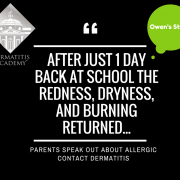

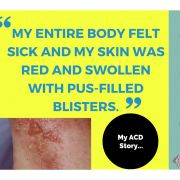
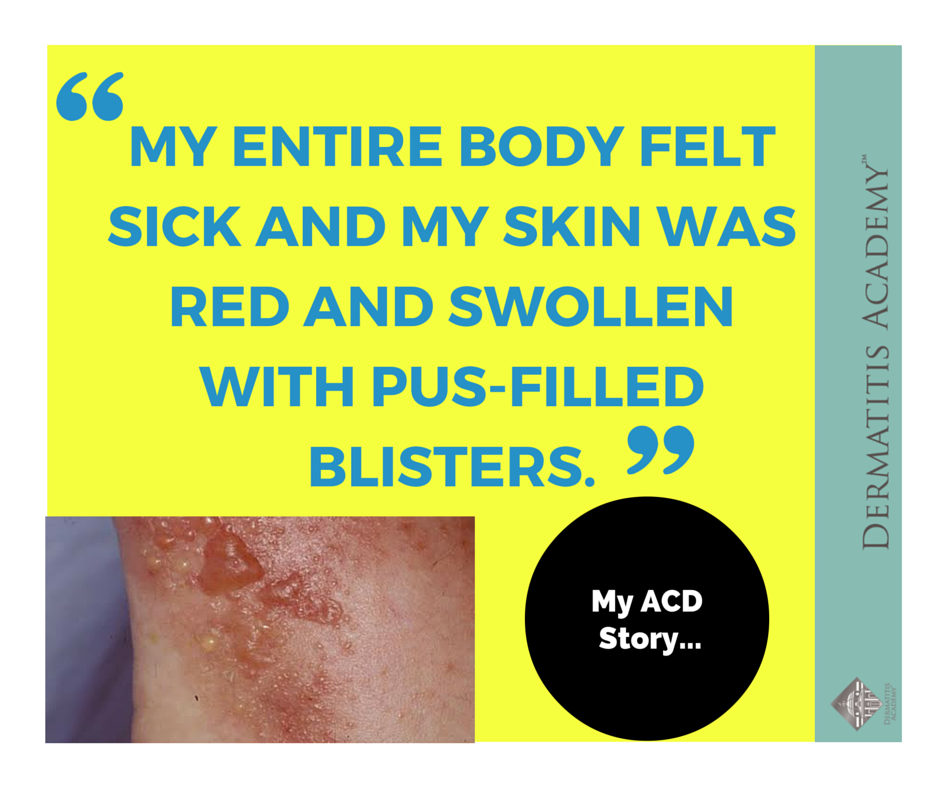
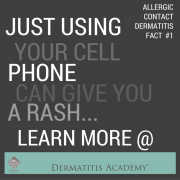
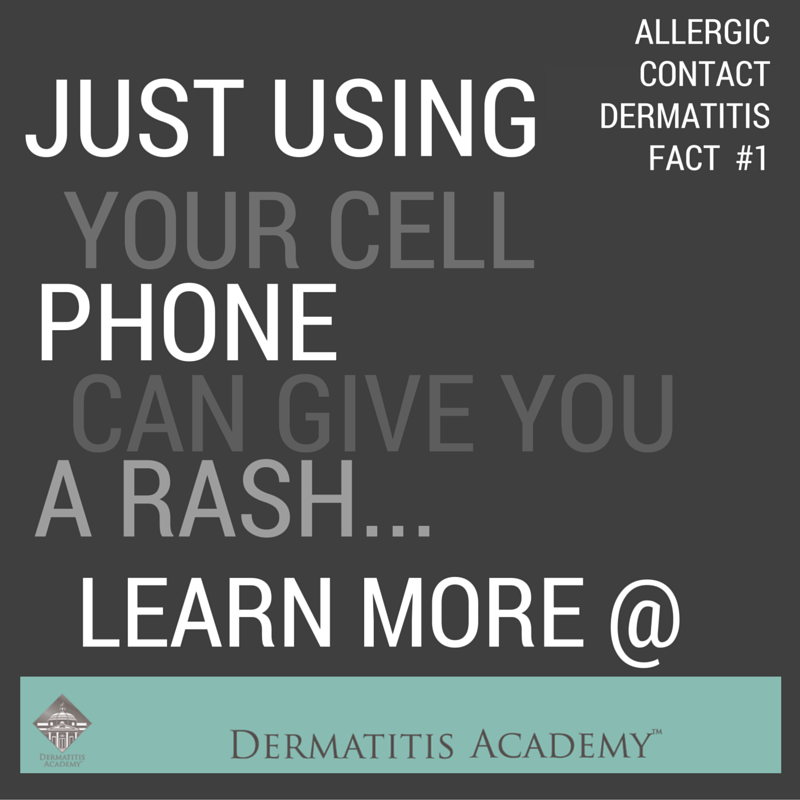


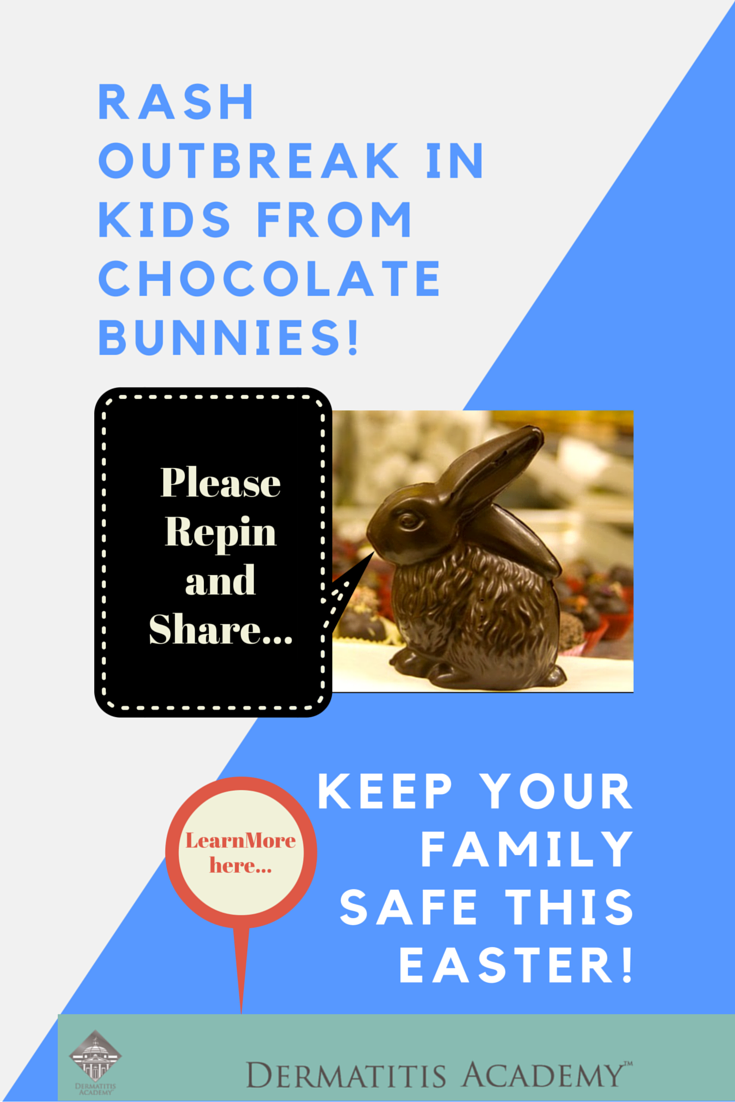
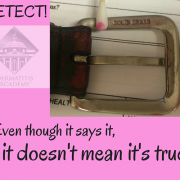
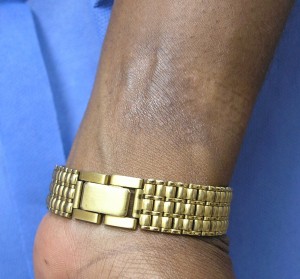 Raise Awareness
Raise Awareness